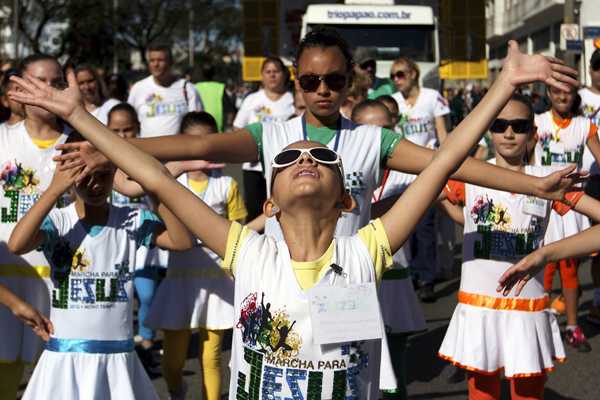Religious Change in Latin America (II)
In this second article I am focusing on the growth of Pentecostalism and the so called prosperity gospel.
17 FEBRUARY 2015 · 18:10 CET

In this second article I am focusing on the growth of Pentecostalism and the so called prosperity gospel. The cradle of the latter and its proponent preachers in Latin America was Brazil, yet among those countries studied, identification with this belief was lowest there.
Among the evangelical denominations, Pentecostalism has the highest level of growth in Latin America. While this is not a new discovery by the Pew Research Centre, the study shows evidence of Pentecostal predominance across the Continent.
The Pew Research Center defines Pentecostals as those whose “worship services often involve experiences that believers consider to be ‘gifts of the Holy Spirit’, such as divine healing, speaking in tongues and receiving direct revelations from God”. Over half of those interviewed - 52% - identified themselves as Pentecostal, although only 47% said they belonged to a Pentecostal denomination. The difference is accounted for by the 5% who describe themselves as ‘Pentecostals’ while belonging to “historical” denominations.
Looking at individual countries, almost 4 in 5 Protestants in the Dominican Republic, Brazil and Panama belong to either a Pentecostal church or otherwise identify themselves as Pentecostal.
While the rate is lower in Puerto Rico, Nicaragua, Guatemala, Argentina, Honduras, Ecuador and Chile, still around two thirds of Protestants similarly identify themselves as Pentecostal.
Pentecostals consider divine healing as one of their core beliefs. The study asked participants if they had ever witnessed divine healing. The countries with the highest affirmative answer (70-72%) were Brazil, Colombia and Nicaragua, Guatemala and El Salvador. The lowest reported levels were Mexico (48%) and, surprisingly, Chile (46%) given it has the longest Pentecostal history.
When participants were asked if people spoke in tongues, prayed for healing or prophesized, the affirmative responses were higher, with levels of 90-93% of participants in Brazil, Colombia, Honduras, Paraguay and the Dominican Republic. In Ecuador, Peru and Uruguay levels were 75-78%. The rate was lowest (69%) amongst the Hispanic population in the United States of America.
In general, the style of worship in protestant churches tends to be Pentecostal in nature, even among those denominations which do not consider themselves as such. Many historical denomination churches have also adopted a more charismatic style which not long ago they would have regarded as Pentecostal.
The study found that 90% of Colombian participants said they jump, raise hands, clap and call out during worship. Among those from Panama the figure was only slightly lower at 86%, and 84% for Costa Rica and Paraguay. Fewer worshippers consider themselves as expressive in Mexico, Peru and Uruguay (70%) and Chile (63%).
Among Latin American countries, Brazil has the longest history of support for the so called prosperity gospel, which affirms that financial and physical health is a guarantee to all believers. While more than half (56%) of Brazilians participating in the study identify with this belief, this is much lower compared to those from Venezuela, Guatemala and Bolivia, where support for the prosperity gospel is around 90%.
The relatively higher level of scepticism in Brazil is probably linked to a series of weaknesses and scandals amongst its proponent preachers.
Pentecostals, or Charismatics, are the fastest growing element within the Catholic Church as well as among Protestant denominations. I will consider this, among other topics, in my next article.
Published in: Evangelical Focus - Kairos and Chronos - Religious Change in Latin America (II)
